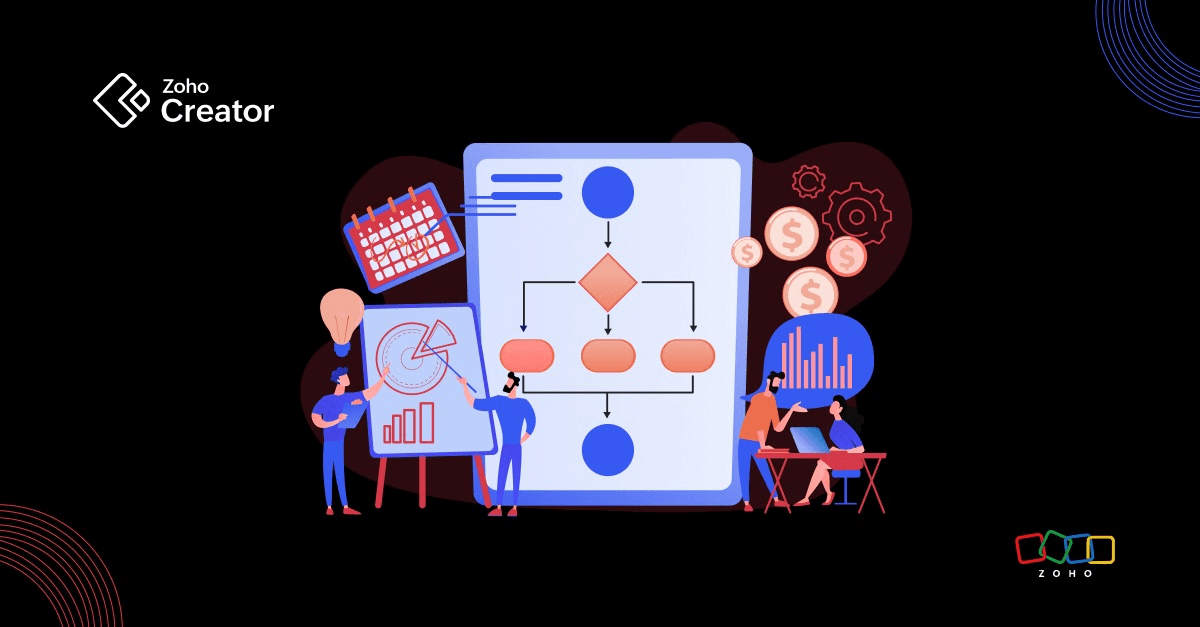- HOME
- Know Your Tech
- Measuring the ROI of low-code application development
Measuring the ROI of low-code application development
- Last Updated : April 20, 2023
- 1.4K Views
- 6 Min Read
Low-code application platforms (LCAP) have quickly become the technology of choice for enterprises looking to drive digital transformation. By cutting application development time, they help businesses bring innovation to the market faster and catalyze disruption at lower costs. LCAPs turbocharge the initiatives of enterprise development teams in addressing mission-critical business issues, enabling them to push rapid change.
Designed for speed, agility, and adaptability, low-code applications are a great fit for budding digital workplaces. Although the many advantages of low-code are well-understood in theory, how can you quantify the real value that your business gets from an LCAP? A low-code platform is a big investment for any business, whether it's a startup or an enterprise, and it's important that they objectively define its impact on their ROI.
The first step to succeeding with digital transformation (DX) initiatives using low-code—and ensuring your LCAP is living up to its cost—is to measure progress with the help of clearly defined metrics.
Identifying core objectives
Before you start crunching numbers to measure ROI, you'll first need to determine what metrics are most important to your digital strategy. You can collect a whole lot of metrics, but only the key performance indicators (KPIs) that are relevant to your business can help you achieve strategic goals.
To gather metrics, it's important to do the following:
Identify what you want low-code to do for you. If your LCAP drives the organization’s broader application delivery goals, you'll want to look at metrics involving time to market and adoption. If it's expected to be a point solution to solve a specific problem, you'll want to look at productivity metrics.
Identify the people who use the platform. If your aim is to help developers, look for metrics that relate to improving IT output. If you want to involve citizen developers, look for digital transformation KPIs and growth.
Metrics to consider and how to measure them
Digital strategies can vary depending on organization, but some key metrics are universal, and you can rely on them to measure DX progress. All the metrics that you need to evaluate the success of your low-code applications are as follows:
IT spending
Digital transformation benchmarks
Number of IT requests
IT output
Stress factors
Let's examine each of them in better detail and see how you can measure them to get higher ROI from your development platform.
IT expenditure
IT expenditure is a primary financial metric you can use to calculate the ROI of a low-code platform. Total IT expenditure compares your intended IT budget against your current IT spending. Tracking this KPI helps you to determine if you're overspending on or under-budgeting a project. By identifying the under-supplied areas of your IT infrastructure, you can redirect your resources, detect overspending, and plan your budget.
How to measure IT expenditure
Compare the cost and time to build a business application with and without the low-code platform.
Assess the number of people it would take to complete the project in a specific time frame.
Estimate any additional resources with and without the low-code platform.
Calculate and compare costs with alternate single-point solutions.
Determine whether delayed projects and rejected requirements can be fulfilled with low-code development. Also, determine if additional features and enhancements will be expensive with low-code platforms.
Learn how a logistics company made substantial monetary gains with custom business apps.
Digital transformation benchmarks
DX benchmarks quantify the scope of the business goals you’re seeking to achieve through digital transformation. Measuring how, how much, and how well your employees use your low-code business applications helps you understand whether your new tools are practical and effective. DX progress metrics include the following:
How to measure DX metrics
Evaluate your existing digital transformation roadmap. Determine how your roadmap would change after implementing low code and how it would compare with the existing one.
Assess whether the roadmap is feasible enough for a department to implement.
Calculate employee engagement and participation levels with the application.
Determine whether the app facilitates voluntary adoption.
Assess whether the app encourages workforce productivity by integrating with other essential workplace tools.
Track and compare the costs of these digital initiatives.
Learn about Zyenac Solutions' employee-centric digital transformation with low-code.
Number of IT requests
Enterprise IT teams currently spend significant time on custom application requests, support tickets, and enhancements for existing applications. This is time that can be spent on new opportunities and high-impact projects. Shifting to a low-code platform can help a swamped IT team to clear existing tasks and reduce IT backlogs. Developers can quickly wind up bigger development projects and offload other requests to citizen developers, like business users, who can build their own solutions with minimal training.
How to measure IT request metrics
Measure the number of requests that your IT team handles since implementing the new platform, and determine whether the numbers have decreased.
Assess how long it would take your IT team to clear off custom app development requests with the low-code platform versus without.
Evaluate how much citizen developers can contribute to clearing IT backlogs without help from the IT team.
IT output
Using low-code, citizen developers and business leaders in your enterprise can build their own applications. This enables IT teams to work on more complex, mission-critical projects that require their professional skillset. Low-code supports developers for faster software delivery with rapid application development (RAD) to quickly churn out apps that meet certain specifications. You can design app prototypes and perform iterations instantly on an LCAP, drastically reducing turnaround time for the IT team. Low-code platforms also support modular, ready-made building blocks, workflows, components, and widgets that reduce development time and the likelihood of bugs, ensuring the quality of your app. Tracking IT output metrics, both in terms of numbers and impact, is an objective way to measure the ROI of an LCAP.
How to measure IT output
Check if developers have the bandwidth to work on mission-critical projects without an LCAP.
Examine the time spent in maintaining and updating old applications without low-code.
Compare the time the IT team takes to close requests before and after LCAP implementation.
Examine and compare the quality and impact of IT output before and after implementation.
IT Stress factor
Enterprise employees want their app requirements fulfilled as quickly as possible, and IT teams are always tackling an endless queue of requests and escalations. If your company's project deadlines are not being met and issues are often escalating to IT leaders, a RAD platform can be an invaluable asset to accelerate development. The low-code platform is geared to a variety of user types, not just developers, greatly reducing the stress faced by the IT team. While general health and stress metrics can seem trivial, they help measure how your LCAP makes a difference.
How to measure IT stress
Look at whether your IT team's contributions have an impact on ROI before and after low-code. An IT team that is spending all its time tackling trivial issues, building small point solutions, or just maintaining existing apps is bound to be demotivated.
Check whether a lot of high-impact projects are still on the backburner, and whether good opportunities are being missed.
Determine how happy other departments are with the IT team. Are they satisfied with the pace of work, output, response time, development time, and other metrics?
Next step: maximizing ROI
With the increasing demand for custom enterprise applications, and limited availability of IT resources, low-code development can prove a smart business investment, both in terms of speed and cost. And whether you're a large enterprise or an emerging SMB, you're likely looking to maximize the ROI on a good investment. This requires a strategic perspective that involves objectively measuring the impact that low-code has had on your business—and whether that impact justifies the cost. Equipped with precise KPIs, IT leaders can leverage low-code and implement it in a way that delivers the biggest returns.
 Rashmi Sasi
Rashmi SasiProduct marketer at Zoho Creator, where she researches and creates content about all things low-code. Writer by day, reader by night, into eclectic books and long sentences, sci-fi enthusiast, and novice painter. Dislikes character limits.



